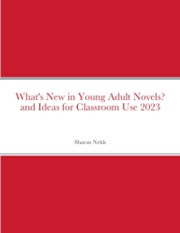If you are looking for well-researched historical fiction, I would highly recommend several novels by Ronald Kidd. My sister-in-law, who is acquainted with him in Nashville, saw him recently and mentioned my interest in young adult novels, and he sent me copies of three terrific novels:
Monkey Town: The Summer of the Scopes Trial, On Beale Street, and The Year of the Bomb. Each book has an informative afterword in which Ron provides details about the historical incidents and people he weaves into his young adult coming-of-age tales.
Ron was inspired to write
Monkey Town: The Summer of the Scopes Trial, when he went to a reenactment of the trial with his friend Craig Gabbert in the summer of 1994. There he met Craig's mother Frances Robinson Gabbert, whose tales of the trial intrigued him. Her father, druggist F.E. Robinson was the local drugstore owner and school board chairman, who suggested a publicity stunt which would take advantage of the Civil Liberties Union's desire to test the state's law against teaching evolution in schools. Robinson asks John T.Scopes, a teacher/coach, to be "arrested" for violating the state's law to help boost the town's economy. Scopes reluctantly agrees, and is stunned when Clarence Darrow arrives to defend him and William Jennings Bryan to head up the prosecution. In
Monkey Town, Frances Robinson is a 15-year-old girl who has a crush on John Scopes and defies her father, who masterminds the publicity stunt, to defend "Johnny." Ron uses actual dialogue from the trial and includes many historical figures, such as H.L. Mencken, as he weaves the story of a young girl struggling to understand the behavior of her friends and neighbors, as well as whether evolution has a place in the classroom.
Ron sets
On Beale Street in Memphis, Tennessee in 1954, suggesting it is an excellent place to begin a study of race relations. The main character, 15-year-old Johnny Ross, is a white boy who lives in a segregated world, until he starts sneaking out and going to Beale Street, the heart of the Negro blues and music scene. There he meets Elvis Presley, who tells him about Sun Records where he hopes to record music. Johnny begins working for Sam Phillips at Sun and develops a relationship with Elvis, as well as other notables such as Nat D. Williams and Dewey Phillips, who broadcast the ground breaking radio program Red, Hot and Blue. As Johnny gets more involved with people in the music business, he discovers ties to secrets from the past and a father he never knew.
A fan of horror movies, Ron spent time watching them with his friends on Hollywood Blvd in the early 1960s. Discovering that
Invasion of the Body Snatchers was filmed in 1955 in Sierra Madre, California and Richard Feynman, one of the inventors of the atomic bomb and the subject of an FBI investigation, lived a few miles away in Altadena, Ron was inspired to combine the two ideas in
The Year of the Bomb. In the book four 13-year-old boys, fans of horror films themselves, are ecstatic to find out
The Invasion of the Body Snatchers is being filmed in their town. Visiting the set, they meet two FBI agents posing as extras, who are investigating the filmmakers for possible Communist ties, as well as a scientist named Richard Feynman. The boys decide to do some investigating of the own and find out Richard was friends with Klaus Fuchs, who sold secrets to the Russians. The boys disagree over whether to turn over their findings to the FBI, as they realize it's not always easy to agree on what is the "right thing" to do.

